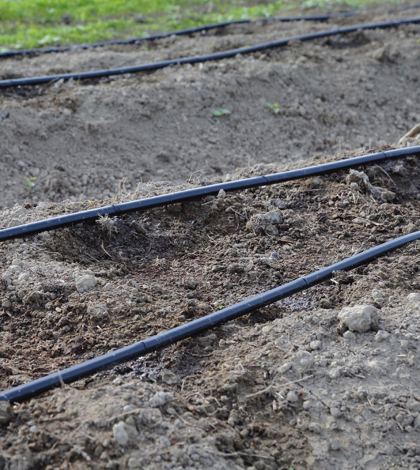Research Project Leverages Israeli R&D
Conaway Ranch in Woodland, California will become the first sustainable farming initiative to utilize Israeli pioneering research and innovation in water technology. The Yolo County farm is owned by the family of Angelo K. Tsakopoulos and encompasses 17,000 acres.
The project was announced at the American Israeli Public Affairs Committee (AIPAC) Policy Conference in Washington, D.C. earlier this week. The goal of the project is to reduce the immense amount of water customarily used in growing rice.
Rice is traditionally grown by flooding farm fields and rice farmers in the Sacramento Valley have suffered as a result of California’s ongoing drought. Experts estimate that rice crops were 30 percent smaller than usual in 2015 because of water shortages.
Conaway Ranch will experiment with the drip irrigation system on a small portion of its rice fields. The project will begin this spring on a 50-to-100-acre test plot.
“We believe this initiative represents the first use of drip irrigation in the U.S. for a rice crop,” said Kyriakos Tsakopoulos, president, principal and chief executive officer of Conaway Preservation Group, owner of Conaway Ranch. “This effort could serve as a model for other farms and potentially save hundreds of thousands of acre-feet of water in California if widely adopted.”
Conaway Ranch has partnered with Ben-Gurion University of the Negev’s Zuckerberg Institute for Water Research and Netafim USA, the world’s leading drip irrigation manufacturer, both of which have experience in growing rice in arid regions. Also participating in the project is Lundberg Family Farms, a Butte County rice grower, and one of the world’s largest producers of organic rice and whole grain products.
“We couldn’t ask for better partners: Ben-Gurion University (BGU) of the Negev’s Zuckerberg Institute for Water Research and Netafim USA,” said Tsakopoulos.
This project seeks to better understand if rice can be grown effectively with sub-surface drip irrigation. This method consists of a series of pipes that deliver water directly to the root zone of the plant. In addition to the potential to reduce rice-crop water usage, it could save on the application of fertilizers and improve weed control.
BGU Professor Eilon Adar has met several times over the past year-and-a-half with California legislators and water resource officials to describe how arid Israel has created a surplus of water through innovation, technology and effective water-management policies.
“We’ve outlined the testing procedures necessary to maximize success, based on experience growing a variety of crops in arid climates using sub-surface drip irrigation. The Zuckerberg Institute is pleased to be playing a leading role, providing knowledge and expertise to help California famers reduce their water consumption.”
A few similar rice crop trials in other parts of the world have been conducted by Netafim agronomist. Installation of the sub-surface system and first plantings at Conaway Ranch are scheduled for completion this spring. As with previous projects, this trial is expected to produce improved yield while reducing water use.
However, the project is not without its opposition.
“One of the benefits of those shallow flooded fields is wildlife habitat,” said Jim Morris, spokesman for the California Rice Commission. “Nearly 230 wildlife species depend on those fields for food and a resting place. The includes nearly 60 percent of the food consumed by millions of ducks and geese that travel along the Pacific Flyway each fall and winter.”
The flooding also provides a spring habitat for black-necked stilts, ibises, egrets and other birds, and is a habitat for the endangered giant garter snake, said Meghan Hertel, with Audubon California.
Hertel said, “We’ve lost 90 to 95 percent of our wetland habitat, our riparian habitat and our floodplain habitat in the Central Valley … and rice is one of those crops that serves as a surrogate habitat in multiple seasons. You’ll find wildlife that use it year-round.”
However, Hertel also noted that Conaway Ranch has been a good neighbor to wildlife. For instance, she said there’s a conservation easement on the property to protect the tricolored blackbird, which is under consideration for listing as an endangered species.
 California Water News Daily Your Source For Water News in California
California Water News Daily Your Source For Water News in California


